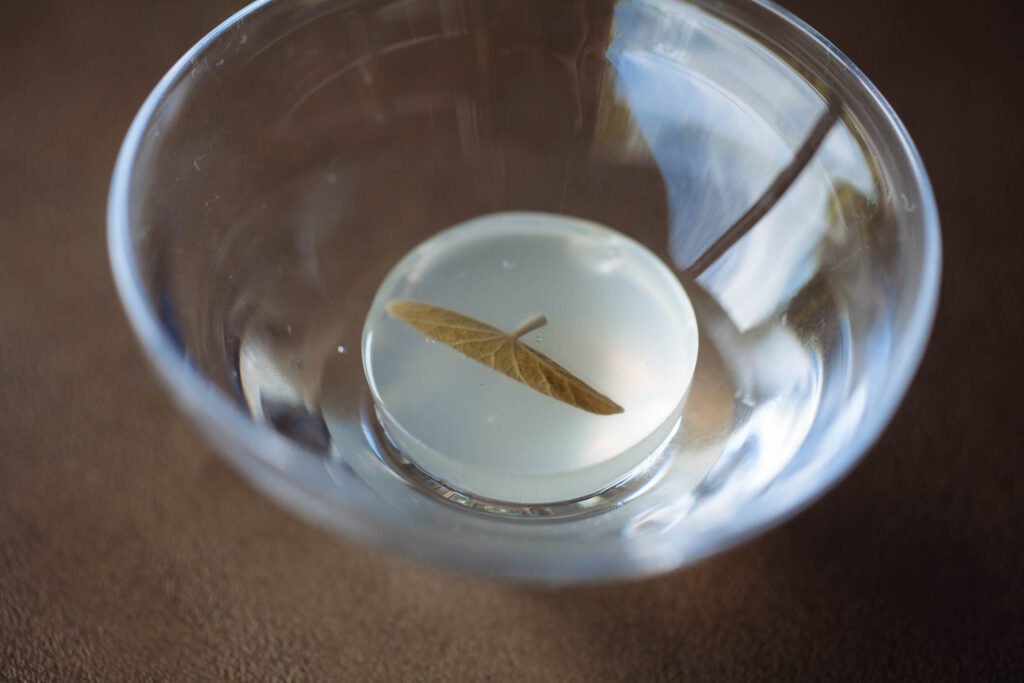
June is an odd month in Mirukashi. It runs hot then cold, bright then gloomy, and my mood swings with the weather. One day I think summer is here! only to wonder a few rainy days later, will summer ever come? That’s the nature of June in Mirukashi. It’s a joyful month because it’s plum season, the time I harvest ume from our trees to make umbeboshi salted plums, ume syrup, liqueur, and jam. But it’s also a dull month because tsuyu begins, the plum rains locking us into a pocket of chilly wet gray. Outside my windows, the distant mountains disappear behind a thick wall of mist. The color blue is but a memory. Green against gray is all I see.
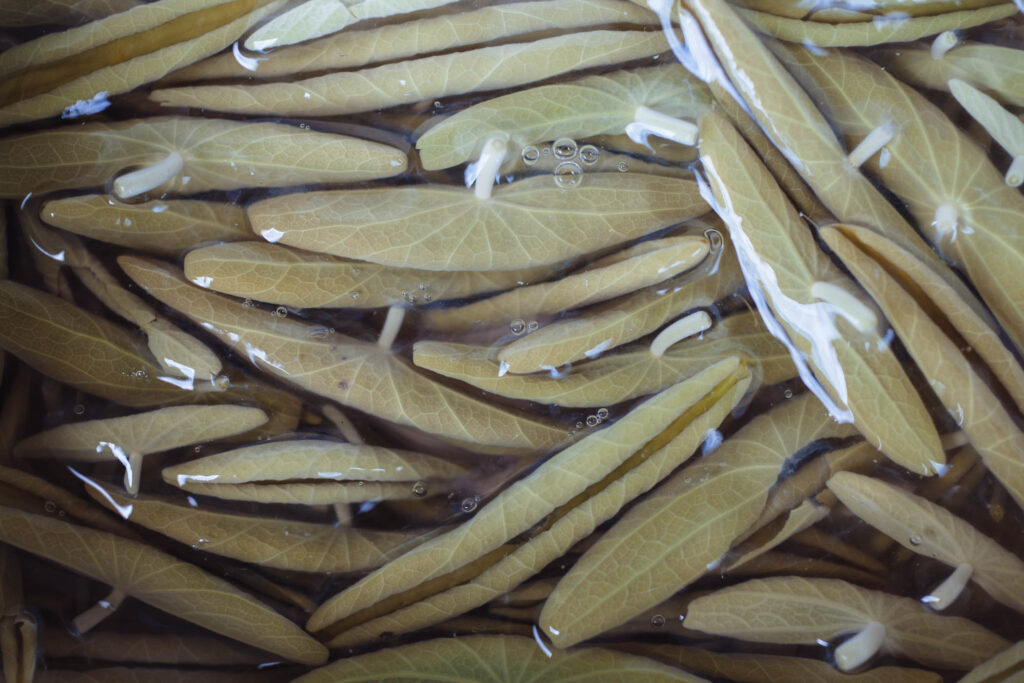
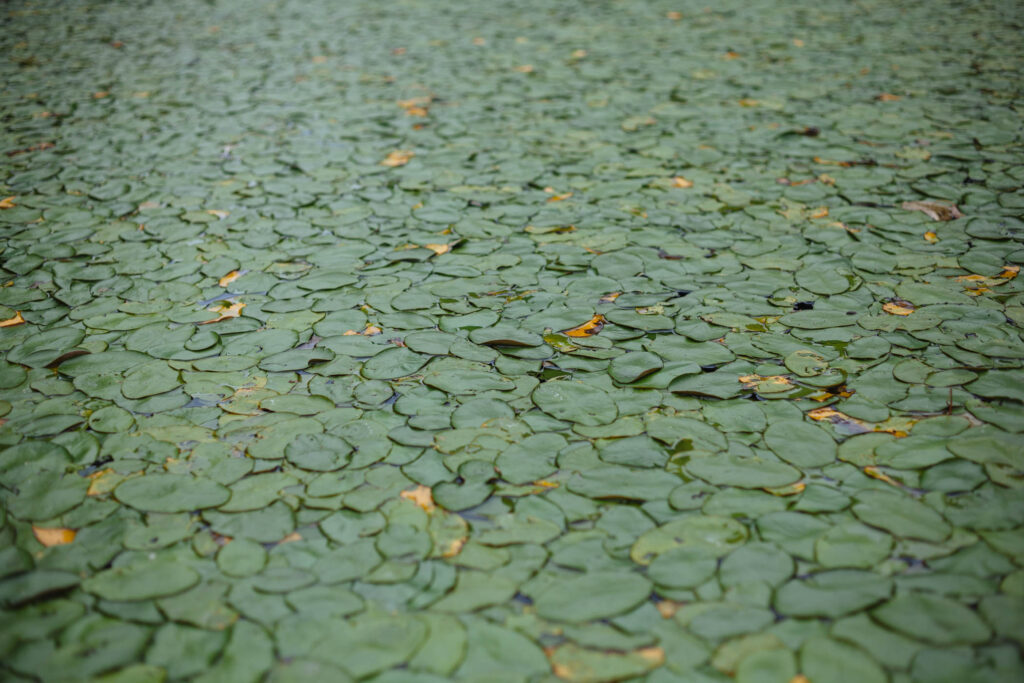
If you took today’s windowful of colors and mixed them together you’d get a shade close to the color of junsai, a yet unfurled water shield leaf. Water shield, my latest edible fascination, is an aquatic herb gathered towards the end of May. It’s a common starter dish at Japanese restaurants but rarely eaten at home. Like many foods in Japan, this one is celebrated for its texture more than its flavor, hence the relatively bold and bright vinegar dressing it’s usually served in. I eat it annually at Arutokoro and have chatted with Sunao about it each year. He gathers them himself and I’ve often dreamed of tagging along but then life happens and the season ends and I think, well maybe next year. But recently, after dinner there two nights in a row with various guests, I asked him to call me the next time he went and on a Friday morning a few days later, he did just that. It was impromptu, today at 3, he said.
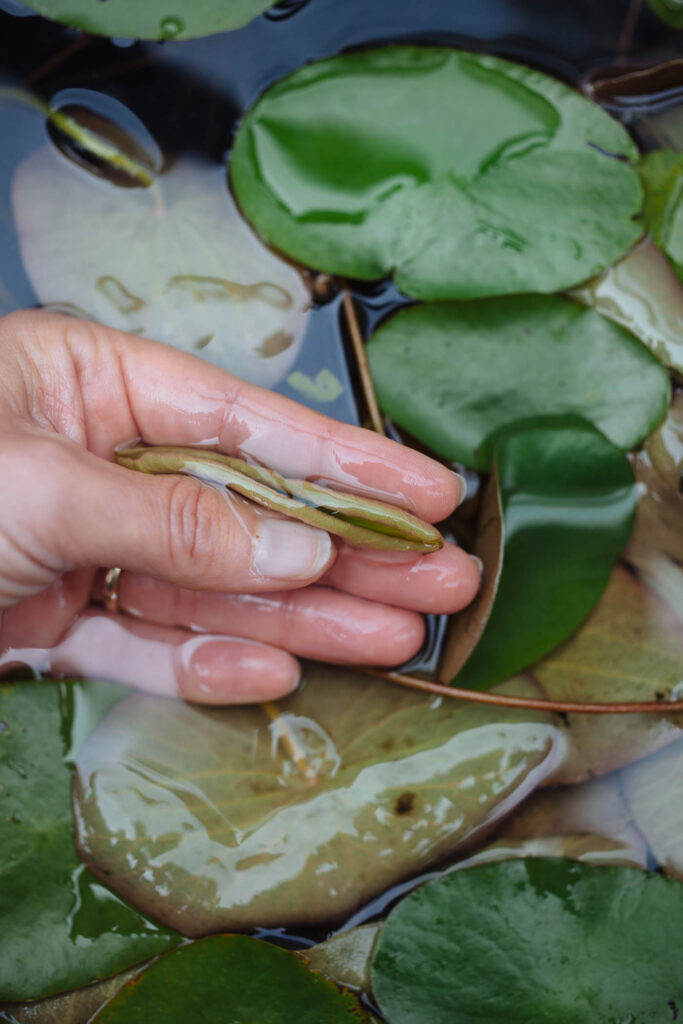
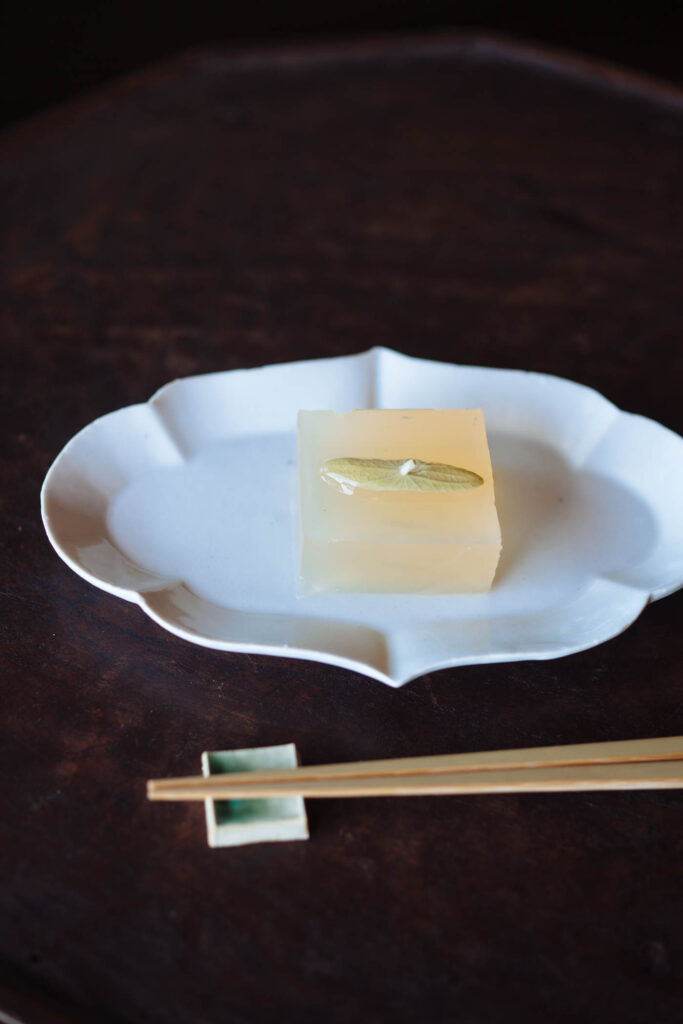
I rode with him about an hour up into the mountains where clean water flows. There, a few years back, a rice farmer had flooded one of his fields and transplanted a bit of junsai as an experiment. Now the paddy-pond is carpeted in green. Sunao helped me into the one person boat, more like a flotation device really, fashioned with a couple of planks thrashed to two steel drums and a bamboo quant for locomotion. Before I drifted away, I asked for a quick harvest tutorial. The paddy is was covered in the leaves of this perennial herb but it was the tiny new leaves below, still gestating under the canopy of green that Sunao reached for. They were unfurled and covered in a sort of embryonic gelatinous coating that dissolves as soon as the leaves mature and the plant flowers.
They were slippery, tricky to grasp and snip at the base with the pressure of a fingernail. Poling my way forward through the magical carpet of green, I gathered a quarter as many as Sunao did in the same span of time. But I spent every minute of it awash in that childlike state of wonder, marveling at how strange and beautiful the things in this world are. And wondering who it was who first thought to try and eat these slippery slivers. For me, this is the thing that makes food so magical and wondrous – engaging with the natural environment where it grows.
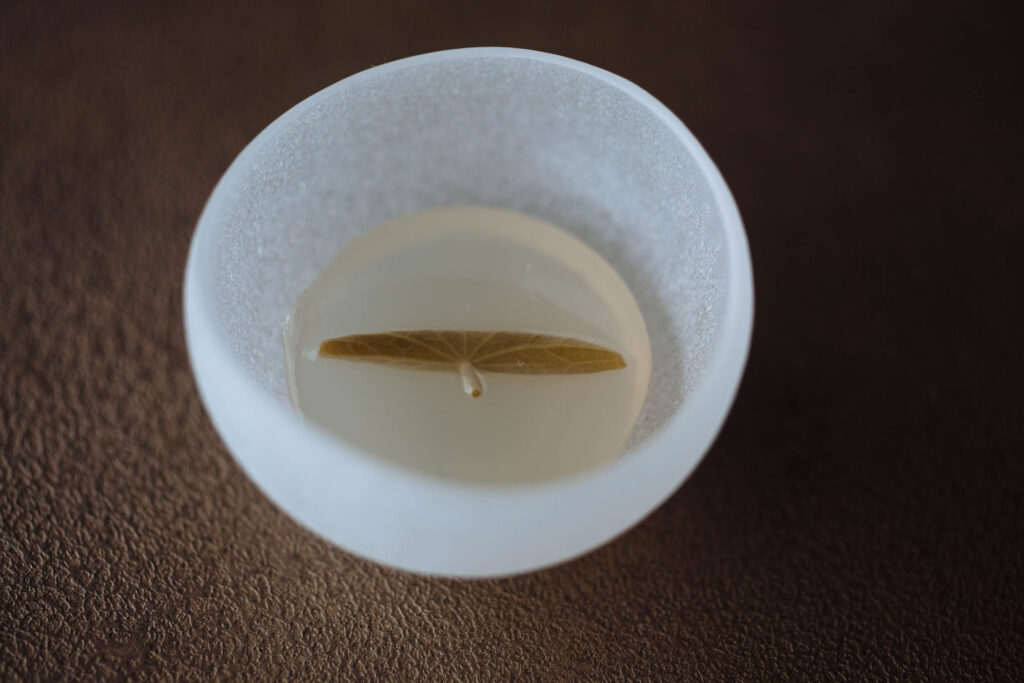
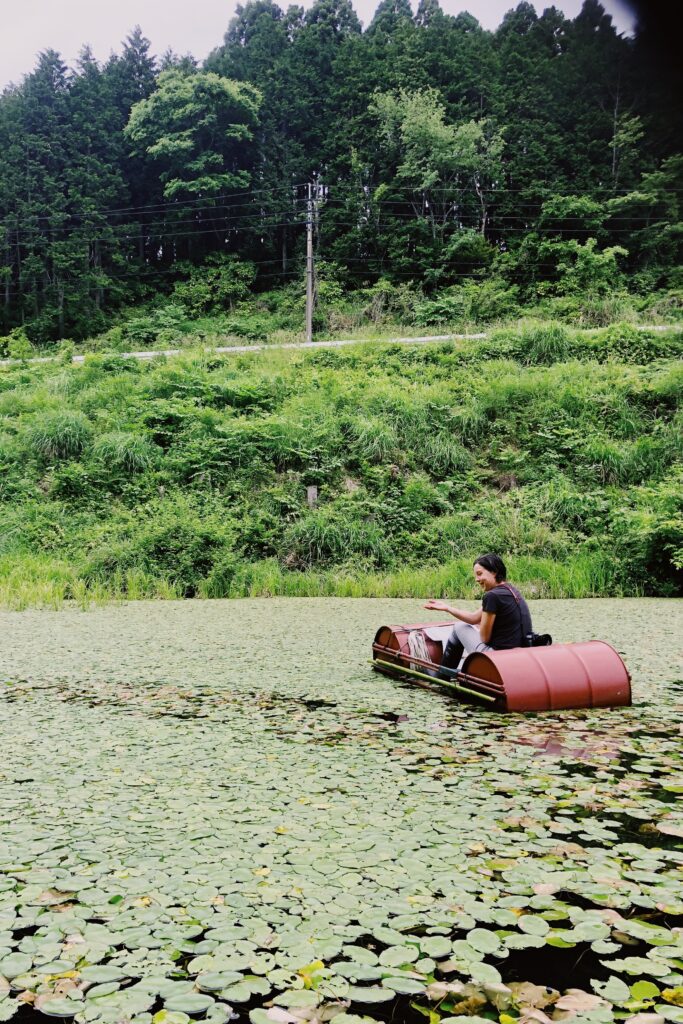
Back at home I did as Sunao instructed, gave them a quick blanching before storing them away. Though I enjoy the traditional treatment in a restaurant like Arutokoro, I found myself wanting to do something very different with them. It likely stems from my fascination with their form, these infant water-born leaves still curled in on themselves, so delicate and fascinating. I’ve added them to aspics in multiple variations and and used them to garnish a chilled egg custard. It’s still a work in progress. The former presents their form in a way I love, the latter better showcases the texture. But I’m still looking for the perfect dish, one that perfectly spotlights the wild, gel encapsulated aquatic herb. But what I do know is that gathering this odd, exotic, edible ingredient with my own hands makes it all the more delicious.